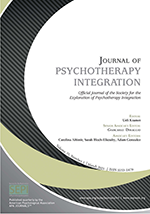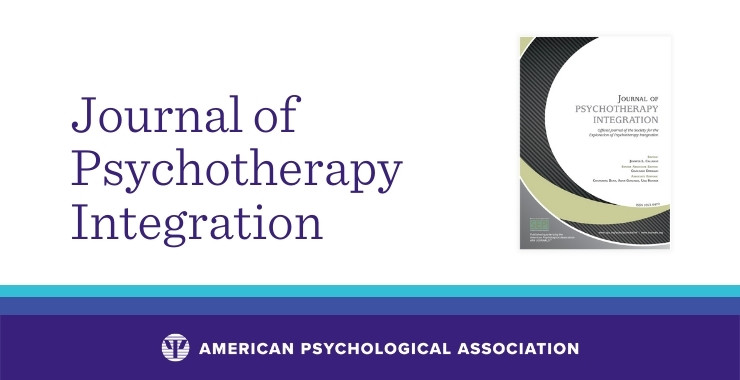The Common Factors Approach to Psychotherapy Integration
There is no standard list of common factors but if a list were to be constructed it surely would include. In contrast psychotherapy integration attends to the relationship between theory and technique.

Pros And Cons Of Integrative Counselling Podcast For Counsellors
A framework for integrating common and specific factors in therapy is provided in this study.

. This attests to the reality of modern psychotherapy practice which is that almost every therapist uses at. As an attempt to deal with such problems current teaching and supervision efforts by the author are briefly described. The advantage of a common factors approach is the emphasis on therapeutic actions that have been demonstrated to.
Asked Apr 26 2017 in Counseling by Thermitsu. Emphasizes the importance of spirituality in counseling. The psychotherapy integration movement has long been instrumental in the search for commonality between therapies and is perhaps best illustrated through the three waves of beahvior therapy.
Fostering the patients hope positive expectations and motivation. The term has been applied to a common factors approach to understanding psychotherapy to assimilative integration and to theoretical integration. Searches for common elements across different theoretical systems.
Problems related to this training perspective are first reviewed. Then the evidence for four factors related to specificity including treatment differences specific ingredients adherence and compe- tence is. A principle-based approach to integration provides a framework for identifying common change processes that may exist among different theoretical orientations.
Supports the notion of remaining theoretically consistent and technically eclectic. COMMON FACTORS IN THERAPIES. Nonetheless many obstacles remain when seeking to advance integration.
The therapeutic alliance has been an Psychotherapy Integration and its Role In Ethical Practice 305. Synthesizes important aspects of two or more theories. Emphasizes the importance of spirituality in counseling.
The common factors approach broadens the conceptual base of potentially curative variables for practice and research. The development of integrative theories the identification of. Emphasizes the importance of spirituality in counseling.
Thus any attempt to train therapists from a. The common factors approach tends to downplay the importance of specific effects or techniques of psychotherapies ie two-chair technique exposure Socratic questioning. PROCESS AND CONTENT VARIABLES One of the most salient factors linking therapies at the process level is the client-therapist relationship.
Synthesizes important aspects of two or more theories D. Although no single therapeutic model claims a majority of practitioners the most frequently endorsed approach is integrative or eclectic therapy. The common factors approach to psychotherapy integration.
The common factors approach to psychotherapy integration. To appreciate the strength of integration in psychotherapy we describe an integrative comprehensive approach to service delivery research and training. The common factors approach to integration stems from the assumption that all effective methods of psychotherapy share to some degree certain critical curative factors.
In the recent past the exploration and evolution of psychotherapy integration has followed three relatively distinct paths. The first route to integration is called common factors and seeks to determine the core ingredients that different therapies share in common Norcross 2005 p. The common factors approach to psychotherapy integration.
Searches for common elements across different theoretical systems B. Based on a developmental model of clinical learning a sketch of a more. Comment on Laska Gurman and Wampold in Psychotherapy.
The field of psychotherapy is characterized by many challenges which integration may change into meaningful opportunities. Meanwhile incorporating a specific model and unique techniques carefully to respond to the clients needs demographic variables and ethniccultural characteristics. This chapter identifies five change principles that are common across orientations and are supported by outcome research.
Searches for common elements across different theoretical systems. A therapeutic alliance established between the patient and the therapist. Synthesizes important aspects of two or more theories.
Common factors appear to account for significant amounts of the change and can be considered a form of integration. The common factors approach to psychotherapy integration. Psychotherapists commonly practice different types of psychotherapy integration applying the common factors approach as well as assimilative integration or theoretical integration.
If youre a member of the Society for the Advancement of Psychotherapy you can access the Psychotherapy article via your APA member page. Psychotherapy integration has been used in several different ways. Our thesis in this chapter is that the clients capacity for self-healing is the most potent common factor in psychotherapy.
Searches for common elements across different theoretical systems. Common factors approaches start from the attempt to identify the specific effective ingredients of any group of therapies. Supports the notion of remaining theoretically consistent and technically eclectic C.
Analyses is presented for particular common factors including alliance empathy expectations cultural adaptation and therapist differ- ences. Synthesizes important aspects of two or more theories. Supports the notion of remaining theoretically consistent and technically eclectic.
The four major constructs of. A large number of common factors and integrated them within five dimen-sions of their generic model of psychotherapy ie therapeutic contract interventions bond states of self-relatedness and realization. Up to 10 cash back This article addresses training in psychotherapy integration from the perspective of common factors.
The term common factors refers to a set of features that are shared across different specific models of psychotherapy and social services but may not always be conceptualized as being curative influences. The key to integration is employing the common factors as fundamental principles. Because the techniques are common to all approaches to psychotherapy the name Common Factors has been given to this variety of psychotherapy integration.
Supports the notion of remaining theoretically consistent and technically eclectic. The selection of best levels and kinds of common factors to be studied are further explored ie the study of client change events and antecedent thera-pist behaviors across different therapies and specific proposals for their research are outlined. The authors recently published an article titled Bridging the common factors and empirically supported treatment camps.

Goal Writing For Pediatric Occupational Therapists Tips Ot Etsy Occupational Therapy Occupational Therapy Assistant Occupational Therapist


No comments for "The Common Factors Approach to Psychotherapy Integration"
Post a Comment